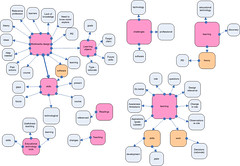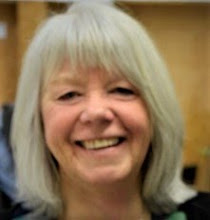October is the month of qualitative analysis. I have developed some codes to use in NVivo on the levels of reflection and have set up
tree nodes using the software. I also had a play with
free nodes. NVivo uses a hierarchy system with tree nodes.
I found it easiest to create a
concept map first of the main categories which came up when I worked through the data in hard copy e.g. learning, MM design, professional, teaching, ed tech tools, challenges, readings. Watch this space!
The intention at present is to focus on the
levels of reflection in
five categories:
1. descriptive reflection - superficial;
2. explanatory reflection - with rationale;
3. supported reflection - with evidence;
4. contextual reflection - different perspectives;
5. critical reflection - applied.
The levels of reflection apparent in the data don't necessarily directly match the categories in the three-step reflective framework though I have incorporated them. So far, I am working through the documents and coding levels of reflection in NVivo. Once this is done for one data set, I will code the other categories and sub-categories. All the reflections are now coded with codes for levels of reflection. I have to run some coding queries and see how the text I have coded looks regarding levels of reflection. I also have to figure out how to measure the instances of reflection and range of levels. At the moment the highest levels of reflection - contextual and critical are not very common. Explanatory reflection (where rationale is given) and supported reflection (evidence from theory & the literature) and descriptive reflection (no rationale) are the most common.
Some questions:
- What is critical reflection really for the purposes of this research?
- Has the reflective framework helped with critical reflection?
- Is it okay to code one paragraph or sentence with more than one code?
So far I have defined critical reflection as: Writing demonstrates awareness of multiple theories and principles and multiple perspectives – ideas which go beyond the subject, the project and the self. The application to professional practice is evident. What was learned and how it can be used is outlined in the writing. There are a few examples of critical reflection emerging from analysis of the reflections.
To do: The idea of setting up a
matrix to look for relationships is something I need to explore further.
The next thing to do is run some queries on the reflections using the free nodes I have set up. Plus explore them to make sure I have coded thoroughly. some of the free nodes will become tree nodes eventually. I am still not entirely sure about the hierarchy in this system.
NVivo tutorials
Luckily I found some free tutorials on the web for NVivo as the tutorials which come with the software are pretty slim pickings. They can be found from Lyn Richards
home page. She has spent years running NVivo workshops and has developed some pretty comprehensive tutorials.
Research articles
When pondering where to code goals as a sub-category in NVivo, I found an interesting looking conference paper called: Nicholls, H. (2003). Cultivating “The Seventh Sense” – metacognitive strategising in a New Zealand secondary classroom. International Education Research Conference AARE - NZARE, Auckland, New Zealand. Available at: http://www.aare.edu.au/index.htm as a
pdfI will read and annotate as it may help me get some clarity about the whole coding thing.


